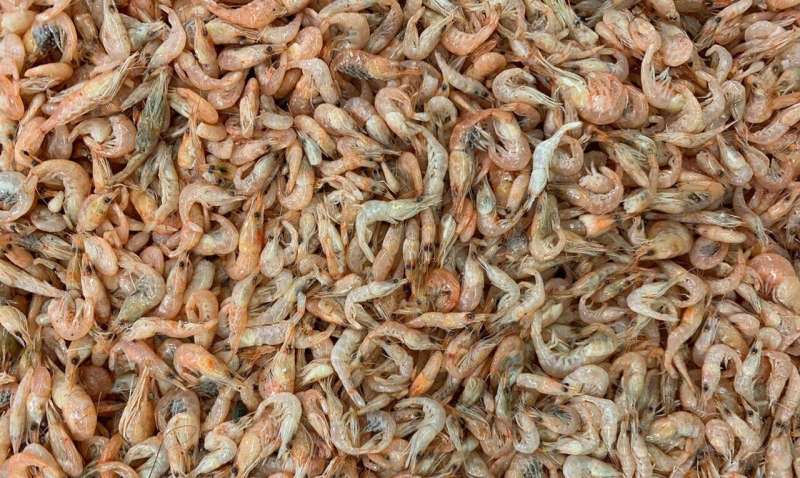The proposal of the Spanish researchers is to produce vanadium flow battery electrodes from chitin, a material from shrimp shells. Credit: John Cameron / Unsplash
A project by Spanish researchers and other collaborators at the Massachusetts Institute of Technology (MIT) suggests the use of chitin from shrimp shells to produce electrodes for vanadium flow batteries. The results of the work have recently been published in ACS Sustainable Chemistry & Engineering.
"We propose to produce these vanadium flow battery electrodes from chitin, a material from shrimp shells, which, in addition to carbon, contains nitrogen," says Francisco Martin-Martinez, a chemical engineer and one of the authors. "Vanadium redox flow batteries, unlike lithium batteries used in the automotive industry, do not provide high energy density, but do provide a large volume of energy storage at low cost, which makes them ideal for storing energy from renewable sources such as solar and wind power, whose energy production is intermittent."
Martín-Martínez, an expert in the development of bio-inspired materials, points out that carbon electrodes are usually used to facilitate the flow of electrons from one side of the battery to the other: "We have produced these electrodes from chitin, a material from shrimp shells. Chitin is a polysaccharide, similar to cellulose, which is found in the exoskeleton of crustaceans and insects."
Improved performance
The peculiarity of chitin, he says, "is that, in addition to carbon, it also contains nitrogen, which is incorporated into the structure of the electrode during the production process, improving its performance." This parameter has been characterized in detail by the authors in the paper.
In fact, the team has proven the benefits of nitrogen in the chemical structure of the electrode, where it facilitates the transfer of electrons between from the vanadium ions. "Obviously, there are carbon electrodes that can yield a better performance, but the key to this project is to produce such electrodes from a waste material, in this case, chitin from shrimp shells," says Martín-Martínez. He emphasizes its good performance, and the low cost and sustainability of the starting material.
At present, electrodes of this type are principally made from carbonized polyacrylonitrile, a synthetic polymer, so its production from a waste product such as chitin is, in the opinion of Martín-Martínez, "a more sustainable alternative."
Martín-Martínez says, "These electrodes from shrimp waste could also be applied in supercapacitors, electrochemical devices that provide a very high energy density, and even in desalination processes, although we have focused on vanadium redox flow batteries,"
More information: Charles Tai-Chieh Wan et al. Exploration of Biomass-Derived Activated Carbons for Use in Vanadium Redox Flow Batteries, ACS Sustainable Chemistry & Engineering (2020). DOI: 10.1021/acssuschemeng.0c02427
Provided by Plataforma SINC
























